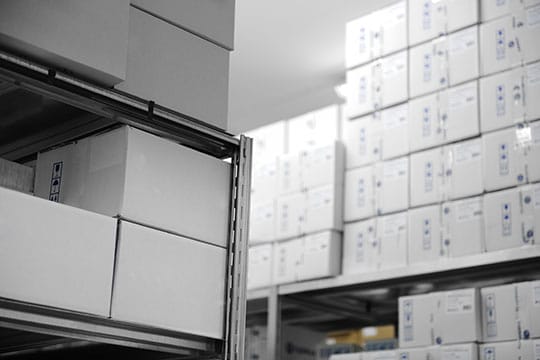A warehouse management system (WMS) is software that optimizes a company’s warehousing, distribution, supply chain, and fulfillment activities.
A warehouse management system (WMS) would often include features to assist streamline and enhance various warehouse operations, from the time items enter the warehouse until the time they depart (and if they are returned/exchanged).
Warehouse management systems also may be linked to and integrated with other forms of software to make all of the company’s processes more connected, seamless, and efficient. Something suitable for today’s omnichannel retail environment, which is required to fulfill client demand.
Common Features

Recommended for you: The Best Choices of Software for Business Owners.
Third-Party Logistics (Third-Party Logistics):

Some of the top warehouse management software incorporates third-party logistics functionality. These functionalities keep track of shipments and inventory for various suppliers, allowing you to focus on shipping while keeping track of outside payments and inventory reports.
Product Movement:

Improved transparency on product placement across the warehouse allows you to track, monitor, evaluate, and minimize delivery times. Measure your software’s return on investment (ROI) in terms of storage and selecting efficiency. When it’s time to ship an item or items, with a WMS, one may use radio frequency identification (RFID) or barcodes to keep track of items within the supply chain.
Inventory control:

Warehouse Management Software observes real-time inventory levels. This eliminates both time and space waste caused by understocking and overstocking. With this software, you may detect item weight or size and discover difficult-to-move things closer to the shipping port with granular information for each item, making designing your warehouse architecture simple. Custom inventory rules can also send you alerts when inventory or picking fails to meet your requirements.
Support for Multiple Devices:

The best warehouse management solutions install directly on your PC but are hosted in the cloud, allowing portable devices and tablets to connect through WiFi or mobile data. A WMS allows both managers and warehouse workers to work freely, making adjustments at their own leisure (without the hassle of written documents/lost papers).
Software integration:

Integrations with supply chain and ERP systems keep everyone in your company informed about shipment and inventory levels. You can simply track and respond to seasonal inventory drops or hiring increases if virtually every stage of your supply chain is automated. Warehouse analytics will be enhanced by data gathered from different supply chain systems, providing you even more ability to boost efficiency and save waste.
Different Types of Warehouse Management Systems

Now that you’ve learned the basics of warehouse management systems, it’s time to choose the sort of system that would work best for your company.
For warehouse management software, there are two primary alternatives when it comes to the types of warehouse management software one can purchase: one being an integrated format that allows your order management to share the same database/processes of your company’s inventory and accounting systems; or, secondly, a standalone format that allows you to personally integrate the details yourself. Below I have listed the advantages and disadvantages of each choice so you can determine which one is suited best for your company.
Standalone WMS

Although standalone warehouse management system software is usually the most cost-effective, it lacks many of the capabilities and features found in integrated software solutions. These are standard on-premise solutions that are installed on the company’s existing network and hardware and are only utilized for warehouse management.
The majority of warehouse management systems are third-party, stand-alone products that organizations must interface with other company software (e.g., Enterprise Resource Planning software). Interface difficulties, information delays, customization costs, and redundant data entry are all common challenges in this procedure.
Furthermore, standalone WMS software only contains the most essential WMS functionalities and does not incorporate any additional supply chain operations. Warehouse operations and inventory tracking and management are the most critical functions of a WMS.
If you opt for a standalone WMS, you’ll receive the following features:
- Receiving.
- Put-away.
- Picking, packing, slotting, and shipping.
- Barcode Scanning.
- Cycle count.
- Expiration date tracking.
Standalone solutions are ideal for small enterprises or companies with limited software budgets. These systems can be used in domains other than warehouse management as inventory management systems.
You may like: All You Should Know About Magento 2 Multi-Source Inventory.
Integrated WMS (with ERP)

ERP is a sophisticated software solution that integrates the features of several different systems. This system includes a majority of the key tools that allow enterprises to work seamlessly. These tools include essentials such as human resources, supply chain drafting, various forms of customer service, and accounting. ERP is an excellent choice for companies who want to improve their software on a wider scale. This is a great step for businesses wanting to get a competitive advantage and boost their ROI. They’re specialized systems that provide scalability and reliable supply chain execution.
Warehouse management is a component of integrated ERP systems, although it is not a basic function of ERP––when looking for ERP software, keep this in mind. Also, I recommend checking ahead of time to see if the system you select has the warehouse management features you intend to have within your business.
This sort of warehouse management system also has a higher price tag. This is because this is software that honestly can do everything. ERP may replace a variety of different software programs and consolidate your activities into a single interface because of its vast reach. ERP may be the ideal option for you if you’re unsatisfied with the existing software solutions you’re using or wish to integrate them into a single system (and payment!).
“When one uses a WMS as a supply chain module vs. as an ERP integration, they will be granted a distinct experience than from one they may have from other independent systems; therefore, a crucial decision one must make before going forth into a purchase is to determine whether or not they would want to invest in a WMS that is programmed solely for the management of their warehouse or one that offers combined solutions as well. The answer to that, however, is contingent on the size and objectives of your company.” – as mentioned by NextGen3PL in one of their recent blog posts.
The Major Players

There are hundreds of companies that specialize in Warehouse Management Software that may or may not be best suited for your business. While on your search, keep in mind that you want to focus on what your company specifically means and what is logical for you to invest in.
To help make your search a bit easier, below I have listed (with a brief description) 3 major players within the WMS world. Let those be a guide and help assist you as you choose the proper software for your business.
CartRover
CartRover, based in California, is a technology company that specializes in integrations—specifically a shopping cart integration that runs in the cloud. They concentrate on developing integrated order management systems and make otherwise disparate systems function in unison by optimizing and automating them.
The program works with the majority of popular e-commerce shopping carts to extract orders and put them into your order management system, shipping software, or fulfillment center. CartRover automatically syncs inventory and takes orders from your cart, sends them to your shipping operation, and provides tracking information back to your cart.
CartRover performs these standard actions:
- Loads orders from your BigCommerce and other Shopping Carts & Marketplaces.
- Sends all your orders to your WMS in a singular interface.
- Utilizes a Warehouse or Order Management System to keep track of orders.
- Sends tracking & inventory back to BigCommerce and your other Shopping Cart or Marketplace.
NetSuite
NetSuite Warehouse Management System (WMS) utilizes daily warehouse operations using industry-leading methodologies. It includes intelligent pick and pack procedures, handheld barcode scanning, inventory accuracy, and assimilation with shipping systems, to assist and guide you as you run your warehouse efficiently. The NetSuite WMS helps users do critical activities in the most efficient way possible, from receiving and storing products to choosing and delivering them. When items are processed in the warehouse, each transaction is instantaneously updated in the NetSuite inventory record and reported in a timely manner.
NetSuite performs in ways as such to:
- Boost worker productivity.
- Increase the speed and accuracy of order fulfillment.
- Lessen the amount of time of item handling.
- Increase operational efficiency with mobile app usage.
- Helps you utilize all available space.
- Instantaneously track inventory.
You may also like: Future of Software Engineering | Trends, Predictions for 2021 & Beyond.
Fishbowl
Fishbowl warehouse management interacts with QuickBooks effortlessly. When new items are ordered, it may automatically issue Purchase Orders and bill QuickBooks. Products may be received and scanned using a wireless mobile device prior to being placed in your warehouse.
One can establish numerous Work Orders and invoices relating to materials for managing complex projects under a Manufacture Order using Fishbowl warehouse management manufacturing tools. One may also use Fishbowl to pick, pack, and send items to customers whenever a Sales Order arrives. Fishbowl creates and sends an invoice to QuickBooks when products are sold, ensuring that the newly inputted financial data is updated.
Fishbowl’s main features:
- In FBW, adjust individual item quantities.
- Transport products from one site to another.
- Organize product data.
- Create and complete sales orders.
- Items must be chosen, packed, sent, and received.
- Accept signatures and track deliveries.
- Obtain payment from customers.
- View real-time reports and graphs.





